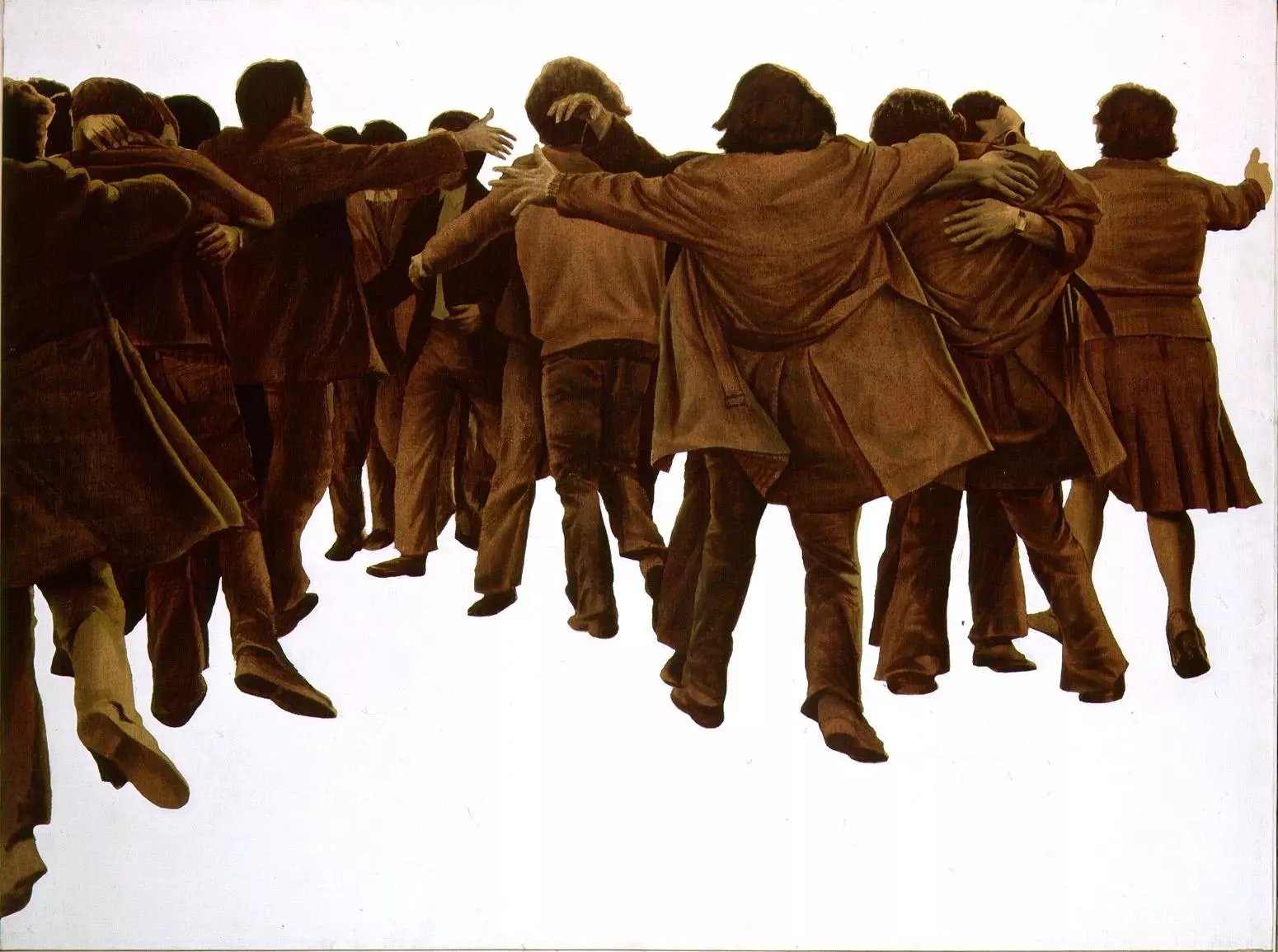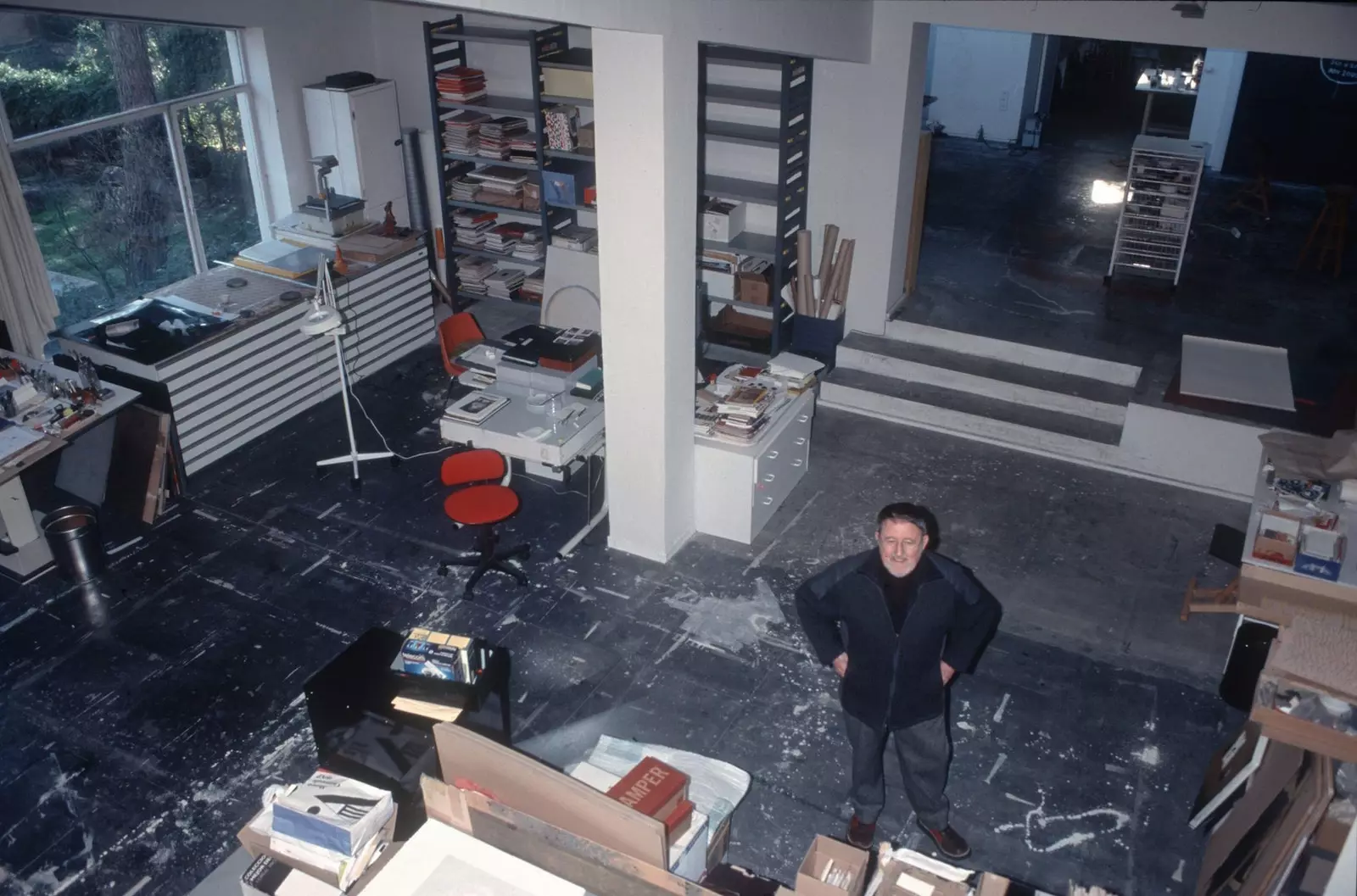
'The hug' by Juan Genovés
For John Genoves, the artistic was political . devised 'Hug' What symbol of reconciliation after the dictatorship . The idea arose when she looked out on the balcony of his house. He saw a group of children playing soccer. They hugged each other to celebrate a good play. He was a great fan. He would have wanted to be a footballer.
In 1976 the situation was uncertain. A year later, the elections gave victory to Adolfo Suárez. The Constitution was approved in the 1978 referendum. The hug looked to the future with optimism . For Genovés, freedom meant living with enthusiasm and hope. He gave the work to Amnesty International. 500,000 posters were printed and the image became an emblem of the Transition.
He had grown up in a working-class neighborhood in post-war Valencia. His father wanted to be a painter, but he was forced to start a coal business to survive. Juan distributed sacks in the streets when he was eleven years old. He falsified his age in the entrance exams to the School of Fine Arts in Valencia . He required himself to be eighteen years old. He said that he was sixteen. He was not over fourteen. He learned little from the teachers, but he did learn from the Fallas artists.
He received militancy in communism as a family inheritance . His grandfather, a trade unionist, organized meetings with his colleagues at home after the war. Genovés prolonged them in his workshop . He had two doors. One of them remained open awaiting the arrival of agents from the Interior.
for the artist, the artistic was political , And because of that he rejected informalism that prevailed in the artistic renewal of the fifties. He practiced a figurative expressionism that shaped the social complaint. He defended the transformative power of art.
The Venice Biennale of 1966 was the consecration of him. He claimed that he had always painted the same picture. As if the characters in 'The Embrace' had remained fixed on the ground and the vision had risen to a zenithal plane, his perspective moved away. The world he saw became small and he decided to make his eyes fly . His colors: grays, blues, ochres, sought to reflect the affinity of the crowd and solitude.
His goal was for the public to understand his work. If not, how could compromise occur? The lawyers who were assassinated in 1977 on Atocha street had a poster of 'El abrazo'. Genovés proposed to the city council to take the image to the sculpture as a tribute.
Forty years later, the original was transferred to the Congress of Deputies, where it was exhibited alongside busts of Manuel Azaña, Alcalá Zamora and Clara Campoamor . When asked why only one woman appears in the scene, he replied: there is only one, but she looks to the future.
The work of art generates new meanings by coming into contact with a new reality. Today, beyond its political content, the joy of the celebration speaks to us closeness and friendship. The gesture unites beyond physical and health barriers.
At the age of 89, Genovés was still painting the same painting, trying to decipher the enigma of the movement that sprang from the canvas. He got up at four in the morning and worked eight hours a day. He had become vegan and practiced gymnastics. He exhibited in June 2019 with his three children at the Niemeyer Center in Avilés, and was preparing an exhibition at the Marlborough gallery.
'Hug' can be visited virtually in room 001.01 of the Reina Sofía Museum, dedicated to the Poetics of democracy. Images and counter-images of the Transition.

Juan Genovés in his study
